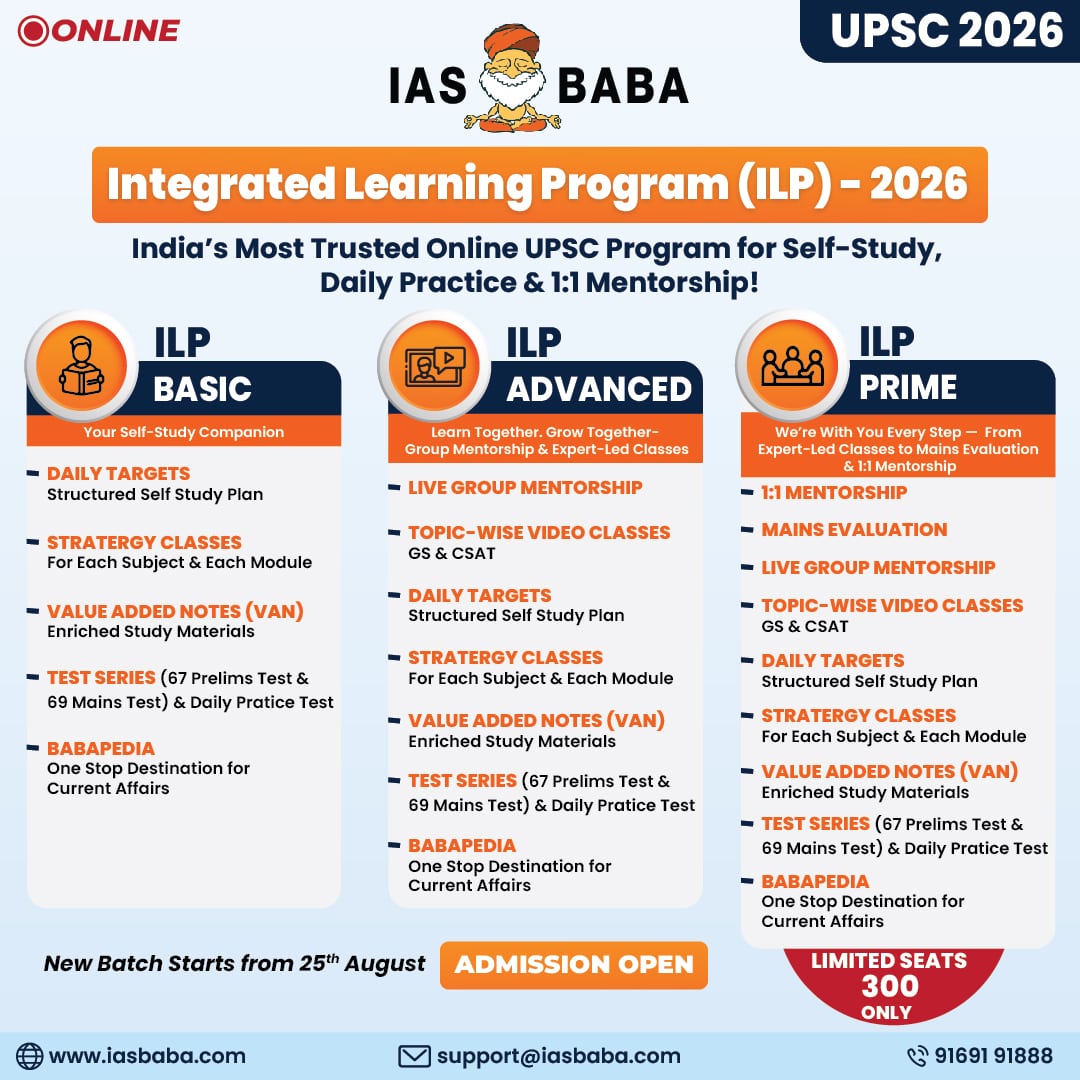IASbaba's Daily Current Affairs Analysis, IASbaba's Daily Current Affairs Jan 2017, National, UPSC
IASbaba’s Daily Current Affairs – 3rd January 2017
Archives
NATIONAL
TOPIC:
General Studies 1
- Social empowerment, communalism
- Salient features of Indian Society, Diversity of India
General Studies 2
- Government policies and interventions for development in various sectors and issues arising out of their design and implementation.
- Welfare schemes for vulnerable sections of the population by the Centre and States and the performance of these schemes; mechanisms, laws, institutions and bodies constituted for the protection and betterment of these vulnerable sections
Reservation- Eligibility and non-eligibility
In news: The country has suddenly witnessed spike in agitations coming across the dominant sections, more bluntly- the dominant castes of the society, to get reservations. This is validated from the agitations carried out by Patidars in Gujarat, the Marathas in Maharashtra and the Jats in Haryana and neighbouring states.
Constitution is clear
The constitution provides reservation for three social classes only:
- Scheduled Caste
- They have been the victims of ‘untouchability’ under the caste system
- This has led to their all-round deprivation, discrimination and disadvantage
- Scheduled Tribe
- They are the sufferers of isolation under vulnerable ‘tribal’ conditions which have made them deprived and brought them at disadvantageous position all through their life
- Socially and Educationally Backward Classe
- These are the victims of ‘social backwardness’.
- They belong to a low position in the traditional caste hierarchy and linkages with ‘lowly’ traditional occupations.
- These sections of society have faced discrimination and have been at a disadvantage due to the traditional social structure of the caste system with ‘untouchability’.
- Thus, the constitution provides for their reservation as a part of comprehensive social justice measures to secure equality for them.
- But, the constitution does not provide for or permit reservation for the poor belonging to the Socially Advanced Castes (SACs) — or the forged ‘economically backward classes’.
- These classes are not recognised by the constitution because their poverty is not the outcome of the traditionally unjust social system.
Understanding Reservation
- The reservation was adopted in the presidencies and princely states of the peninsula well before Independence.
- Reservation is not a programme for the removal or amelioration of poverty and unemployment but to remove the imbalance in governance and administration where there is monopoly of a few castes and the exclusion of castes that account for the vast majority of the population.
- With constitution’s affirmation, the reservation became an integral part of the basic structure of measures required for the elimination of inherited inequality, based on caste with ‘untouchability’ and for social equality.
- As a result, the SACs are now seeing the once looked down upon castes coming up through reservation and progressing in admission to educational institutions and employment as well as occupying top positions such as presidents and chairpersons of panchayats and municipalities, as a threat to their dominance.
- Thus, the dominant castes are demanding an inclusion in the list of Socially and Educationally Backward Classes (SEdBCs) and thereby avail provision of reservation on that basis.
The SACs
- The presently agitating castes are dominant castes whose members are major landowners in their states. A widely known fact is that some of these castes have leveraged their advantageous position in agriculture to diversify and enter business, trade and industry in addition to state services.
- The national and state backward class commissions have found these communities socially and educationally not backward and also adequately represented in services and that is why their past requests for inclusion in SEdBC lists have been rejected by governments.
- Hence, they are resorting to an exercise of coercive power on governance as they do not meet objective criteria, especially the basic criterion of social backwardness.
- However, this coercion has hidden motive too- if the government cant give them reservation, reservation should be abolished totally- and thereby push back the further progress of SCs, STs and SedBCs.
- Another reason mentioned by SACs is that land fragmentation and economic problems are being faced by them and hence they should be included in reservation list. But it has to be clearly etched in mind that such economic exigencies by themselves cannot be the criterion for recognising a caste as socially backward.
Raising the ground
- It is true that there are difficulties in agriculture and cyclical problems in industry and the solution can be found through appropriate policies.
- The genuinely poor among the SACs deserve sympathy and help through an appropriate dispensation and not inclusion in reservation list.
- Similarly, there can be measures like scholarships and education loans, so that no youth has to drop out at any stage due to financial incapacity. This will prevent any burden on the youth and family as well as no requirement of being added to ‘reservation list’.
- It has been observed previously that ruling parties have succumbed to force of such dominant parties and also opposition partied have supported them which makes the battle lines being drawn between ruling and opposition parties and nation and constitution.
- Such dishonest and short-sighted gimmicks are especially used during elections which bring parties into disrepute and erode confidence in democratic system wjile creating social disharmony also.
Conclusion
It is well known that jobs have dried up despite the comparative growing Indian economy around the world. However, quota is not a solution to gain employment. There were 19.5 million jobs in the public sector in 1992-1993 when India’s population was 839 million. While the country’s population is now 1.3 billion, the number of jobs in the public sector has shrunk to 17.6 million. Thus, quota is no means to plug job loopholes.
The politicians have tried to bypass the court orders by creating quotas for economically backward classes as seen in Rajasthan Economically Backward Classes (Reservation of Seats in Educational Institutions in the State and of Appointments and Posts in Services under the State) Bill 2015. Gujarat and Maharashtra tried to introduce quotas for economically weaker sections but these governments were overruled by the courts.
The constitution has designed positive discrimination in favour of socially backward class and not for the poor dominant castes. That is the reason why courts have systematically struck down the quotas introduced by governments for such castes. The courts have also struck down additional quotas because they push up the proportion of reservation above the 50% limit set by SC.
Hence, it is the duty of political class to make it clear that SACs cannot be included in the list of Socially Backward Classes — the genuinely poor among them will be given appropriate relief and help, but not reservation.
Connecting the dots:
- The quota system has been a boon or bane? Elucidate.
- Quota system has divided society into multiple unintended fragments. Do you agree? Explain why.
GOVERNANCE
TOPIC:
General Studies 1
- Urbanization, their problems and their remedies.
General Studies 2
- Government policies and interventions for development in various sectors and issues arising out of their design and implementation.
Revival of Focus on Urbanisation in India
Introduction and Significance of Urban Areas
Urban areas are often referred to as engines of inclusive economic growth. Currently, almost 30% of the population in India is living in urban areas. Further, it is expected that India will add 300 million new urban residents by 2050 and hence needs to build climate-friendly and resilient cities to address the challenge of accommodating the needs of the growing population. As per the first ‘World Cities Report 2016- Urbanisation and Development: Emerging Futures’ report by UN Habitat, urban areas in India are already contributing more than 60 per cent of the GDP. Hence, India needs to ensure continued focus on terms of policy on addressing the needs of rising urbanisation.
Challenges to Urbanisation
Even though there has been universal acceptance and acknowledgment on the importance of urbanisation for economic growth, still India has lagged behind in terms of urbanisation due to the following reasons:
- Indecisiveness on the matters related to urbanisation in the post independence years.
- Inadequate relevance given to urbanisation for achieving our socio-economic goals and development.
- A weak policy approach towards urbanisation has also led to faulty implementation and ignorance.
- Centralised approach in policies and initiatives related to urbanisation did not give states or cities much autonomy and choice.
- Delayed approval of projects caused implementation delays.
Such an approach led to failure of one of the first dedicated policy towards urbanisation – Jawaharlal Nehru Urban Renewal Mission (JNNURM). JNNURM was launched in 2005 but by the end of its existence in 2014, only 710 projects out of the 1630 sanctioned under JNNURM could be completed.
Change in Approach
The government has now come up with many policies focussed on addressing challenges of rising urbanisation. For the effective functioning of these policies and programmes, the government is bringing in following changes in its style of working:
- Objectivity and transparency in selection of cities and allocation of central resources under new urban missions. This is being done on the basis of urban population and the number of statutory urban local bodies in each State.
- Bottom up planning is being promoted to encourage more sense of sense of involvement in and ownership of new schemes by city and State governments.
- Timely project and investment approvals are being accorded to ensure giving the states and cities sufficient time for their implementation.
- Citizen participation in urban planning and project prioritisation are now made mandatory.
- Cities are also being empowered by making them a part of the development. They are being given a higher say in the entire process.
- Under the Atal Mission for Rejuvenation and Urban Transformation (AMRUT) and Smart Cities Mission, there shall be a comprehensive assessment of infrastructure deficit before drawing up city-level action plans.
- States will not be allocated funds and projects in an arbitrary manner or on the basis of poor quality reports and project analysis.
- Online integrated single-window clearance for construction permits is being put in place to improve ease of doing business.
- Public-private partnerships are being encouraged in cities to address the financing needs.
Addressing Financing Problems
Earlier, there was a major problem where project approvals were given in the last two quarters of the financial year. This led to a hurried and unorganised manner of implementation. This not only led to delay in implementation of projects but also let to cities and stated receiving inadequate funds.
Now the government is making efforts to anticipate fund entitlements of each State and city-wise infrastructure deficits in advance. The Ministry of Urban Development has also started approving investments for the next three financial years under AMRUT during this year. Such steps enable city and State governments to realise mission targets by the stipulated time through advance planning.
In a latest shift of methodology, cities are now vying for credit rating to attract investment which proves useful for urbanisation. Pune and Ahmedabad are ready to issue municipal bonds to raise funds. Post approval, release of funds is also linked to progress of mandated governance reforms under the urban development missions.
Impact
As a result of the above reform measures undertaken by the government in the area of policy related to urbanisation a lot of positive changes have taken place.
- Under the Pradhan Mantri Awas Yojana (Urban), construction of about 15 lakh affordable houses is being financed as against only about 12.50 lakh during 10 years of UPA rule. Under AMRUT, 86 per cent of mission investments stand approved.
- Over 500 cities and towns have already become open defecation-free and Andhra Pradesh, Gujarat and Sikkim have declared all cities and towns as open defecation-free.
- Financial allocations are being made in a timely manner. Government has committed Rs.50,000 crore under AMRUT, Rs.48,000 crore for smart cities. Funds are also being allocated to individual households under the Pradhan Mantri Awas Yojana (Urban).
- Higher allocation for cities and more empowerment to states to spend more is aldo being experienced.
Connecting the dots
- Discuss why India has been lagging behind in tackling the preparing for urbanisation. Suggest what changes in governance and policy implementation will help India in preparing for Urbanisation?
MUST READ
All’s not well in the Army
What is special about special courts?
Rebuilding foreign policy consensus
How EC decides when parties split
Thriving in the post-truth era
Andhra Pradesh and data-based governance
Reverse-engineering artificial intelligence
Challenges of the new year
What they don’t tell you about digital payments
Slow stimulus














